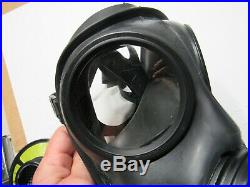


The evaluation demonstrated that both contractors had viable solutions that would be compliant against all the Key User Requirements (KURs) and the majority of Priority 1, 2 and 3 Individual User Requirements (IURs). The technical performance of these prototypes were independently assessed and validated against the User Requirements Document (URD). and improving equipment compatibility.These two contractors were required to further develop these core concept technologies, and provide Proof of Principle Prototype respirators that met the main performance requirements under three main headings of: The Initial business case was approved on 24 July 2002, followed by a competitive procurement between Scott Health & Safety Ltd (Skelmersdale) and Avon Protection Ltd. The protection factors of the new respirator would be well in excess of current US and NATO standards. 5.3 GSReS -General Service Respirator 'Evolution Specialist'ĭstl (Defence Scientific and Technical Laboratory), Porton Down was tasked with concept development and proof of principle to identify, research, devise and develop technologies to meet the requirements of a new respirator for the British armed forces.5.2 GSRe -General Service Respirator 'Evolution' or 'Export'.3.10.2 Fullers Earth Decontamination Powders.3.9.2 GM (General Maneuvers) Field Pack.This variant is considerably rarer than the FM12. This is to reduce the overall weight of the respirator, as the straw is not needed in a counter-terrorist situation. The difference between the FM12 and the CT12 is that the CT12 has had the drinking straw removed and sealed at the factory. Respirator used for counter-terrorism operations. This change from the rubber straps of the S10 was designed to enable the mask to be worn for longer periods of time without discomfort, and also to hold the mask tighter to the face for a better seal. The harness of the FM12 consists of elastic strips, which connect to a mesh fabric piece on the back of the wearer's head. When only one filter is fitted to a mask that has the ability to accept two, a blanking plug must be used. The main noticeable difference between the FM12 and the S10 is the ability of some FM12's to mount two filters to the mask simultaneously, as was done by the SBS in the Gulf War. The 'ridge' present around the edge of the S10 is absent from the FM12. The FM12 also has an inner mask to prevent fogging of the lenses. The FM12's drinking tube is also longer than that of the S10, making drinking easier while wearing the mask. The FM12 has an overall lower profile than the S10 and sits closer to the wearer's face. However, the voice emitter and exhale valve cover is smaller than that of the S10, as are the lenses. The characteristics it shares in common with the S10 are the fail-safe drinking device, two speech transmitters (one primary integrated in the exhale valve at the front, another secondary at the side port for telephone communications), and the ability to accept corrective lenses on the inside of the eyepiece. The mask was designed around the S10, but has several design differences. The latter have a maximum shelf-life of 10 years, and the mask itself (the facepiece) of 20 years. Two filter canisters are issued for the FM12, as with the S10 a light pressed metal type for riot control situations or training (marked with a painted red stripe or red tape), and a heavier plastic-encased type for protection against CBRN agents. ( January 2021) ( Learn how and when to remove this template message) Unsourced material may be challenged and removed. Please help improve this section by adding citations to reliable sources.


 0 kommentar(er)
0 kommentar(er)
